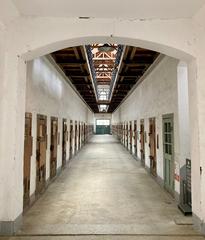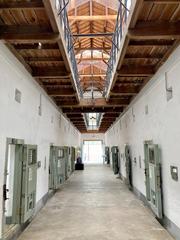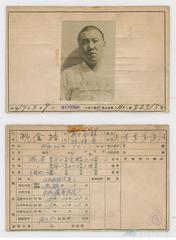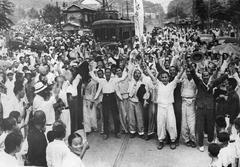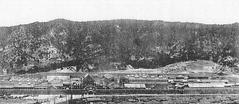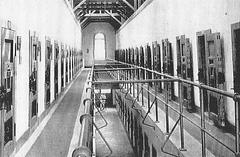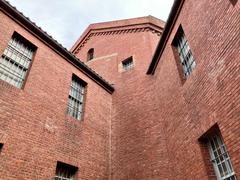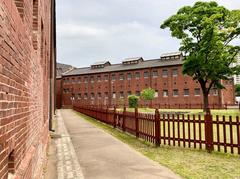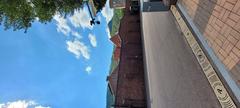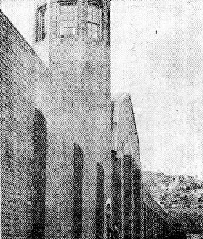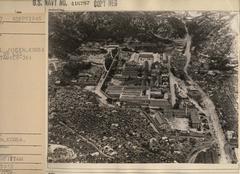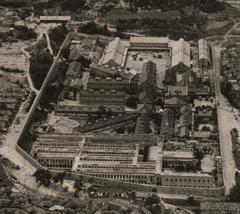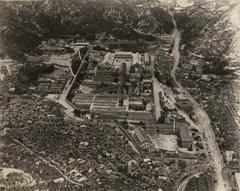
Seodaemun Prison Visiting Hours, Tickets, and Comprehensive Guide to Seoul’s Historical Landmark
Date: 14/06/2025
Introduction
Seodaemun Prison History Hall stands as one of Seoul’s most significant historical landmarks, providing an immersive and moving account of Korea’s arduous struggle for independence and democracy. Established in 1908 as Gyeongseong Gamok, the prison became notorious during the Japanese colonial period (1910–1945) for detaining and torturing thousands of Korean independence activists, including notable figures such as Yu Gwan-sun and Kim Gu. Today, its preserved red-brick buildings, original prison cells, and evocative exhibitions allow visitors to reflect on Korea’s journey toward sovereignty and the ongoing importance of human rights and remembrance (Klook; Triphobo; Korea.net).
Conveniently located in Seodaemun-gu, near Dongnimmun Station (Subway Line 3), the museum is accessible to both domestic and international visitors. It offers guided tours in multiple languages, is wheelchair accessible, and features a range of amenities. Whether you are a history enthusiast, student, or traveler, a visit to Seodaemun Prison is a profound opportunity to connect with Korea’s past and appreciate the sacrifices made for freedom.
Contents
- Historical Overview
- Origins and Construction
- Role During Japanese Colonial Rule
- Symbolism and National Significance
- Visitor Information
- Location and Access
- Visiting Hours and Ticket Prices
- Guided Tours and Accessibility
- Exhibitions and Interpretive Spaces
- Main Museum and Exhibition Halls
- Prison Buildings and Torture Chambers
- Memorials and Monuments
- Nearby Attractions and Travel Tips
- Cultural Significance and Preservation
- Frequently Asked Questions (FAQ)
- Conclusion and Call to Action
- Sources
Historical Overview
Origins and Construction
Seodaemun Prison was built in 1908 under the name Gyeongseong Gamok, just before Korea’s formal annexation by Japan. Its red-brick construction stood in stark contrast to traditional Korean architecture, symbolizing foreign authority. The prison’s strategic location near Seoul’s center was intended to reinforce the presence and control of the colonial government (Klook).
Role During Japanese Colonial Rule (1910–1945)
During the Japanese occupation, Seodaemun Prison became infamous for incarcerating, torturing, and executing Korean independence activists. Over 40,000 people passed through its gates, especially during periods of intensive resistance like the March 1st Movement in 1919, when the prison was notoriously overcrowded. Prisoners endured harsh conditions, forced labor, and brutal interrogations in underground torture chambers and solitary cells. The facility’s role as a site of oppression and sacrifice makes it a central symbol in Korea’s national memory (Triphobo).
Symbolism and National Significance
Seodaemun Prison embodies both Korea’s suffering under colonial rule and the resilience of its people. Since its transformation into a memorial museum in 1992, the site serves as a powerful educational and commemorative space, preserving the stories of countless unnamed victims and notable leaders alike.
Visitor Information
Location and Access
- Address: 251 Tongil-ro, Seodaemun-gu, Seoul (서울특별시 서대문구 통일로 251 (현저동))
- Subway: Line 3 to Dongnimmun Station, Exit 5, then a short walk (The Soul of Seoul; Visit Korea)
Visiting Hours
- March–October: 09:30–18:00
- November–February: 09:30–17:00
- Last admission: 30 minutes before closing
- Closed on: Mondays, January 1st, Seollal (Lunar New Year), and Chuseok. If a holiday falls on a Monday, the museum is closed the following Tuesday (The Soul of Seoul).
Ticket Prices
- Adults: ₩3,000
- Youths/Seniors: ₩1,500
- Children under 7: Free
- Group discounts: Available for groups of 20 or more
- Discover Seoul Pass: Free entry (KoreaToDo)
Guided Tours and Accessibility
- Guided Tours: English and Japanese tours available; reserve at least one week in advance (+82-2-360-8586).
- Wheelchair Access: Ramps, elevators, and rentals available. Some older areas may be less accessible.
- Facilities: Restrooms, gift shop, café, and on-site parking (₩1,000).
Travel Tips
- Visit on weekdays or early/late in the day to avoid crowds.
- Wear comfortable shoes—extensive walking is required.
- Photography is allowed (no flash/tripods). Respect commemorative areas.
Exhibitions and Interpretive Spaces
Main Museum and Exhibition Halls
The main museum building features three floors of exhibits detailing Korea’s independence movement and the prison’s grim history. Highlights include the National Resistance Room, displays dedicated to prominent activists, and interactive multimedia presentations (Wikipedia; Klook).
Prison Buildings and Torture Chambers
Seven original prison buildings remain, including cell blocks, a leper house, and the execution building. Visitors can explore preserved cells, solitary confinement rooms, and the underground torture chamber, which features original devices and survivor accounts (The Soul of Seoul; Travel Through Life).
Memorials and Monuments
The outdoor memorial honors those who died at Seodaemun. The Pot with Soul of Nation, created by artist Lim Seung-O, serves as a focal point for reflection and remembrance (klook.com). The wall of mugshots and personal artifacts further humanize the stories of resistance and sacrifice.
Nearby Attractions and Travel Tips
- Seodaemun Independence Park: A quiet green space perfect for reflection.
- Dongnimmun Gate: Historic and photographic landmark near the museum.
- Hongjecheon Stream: Ideal for a peaceful walk after touring the prison.
Cultural Significance and Preservation
Seodaemun Prison has become a powerful cultural symbol, featured in films, TV, and literature, and is central to national commemorations. Preservation efforts ensure the authenticity of the site, balancing the need to maintain its historical atmosphere with modern accessibility (Korea.net). Educational programs and intergenerational dialogue help keep the memory of the independence movement alive, reinforcing the message that “a nation that forgets history has no future.”
Frequently Asked Questions (FAQ)
Q: How do I get to Seodaemun Prison History Hall?
A: Take Seoul Subway Line 3 to Dongnimmun Station, Exit 5, and walk about 10 minutes.
Q: What are the visiting hours?
A: Open Tuesday–Sunday: 9:30 AM–6:00 PM (March–October), 9:30 AM–5:00 PM (November–February). Closed Mondays and select holidays.
Q: How much are tickets?
A: Adults: ₩3,000; Youth/Seniors: ₩1,500; Children under 7: Free.
Q: Are guided tours available in English?
A: Yes, reserve at least one week in advance.
Q: Is the site wheelchair accessible?
A: Most areas are accessible, but some original structures may pose challenges.
Q: Can I purchase tickets online?
A: Tickets can be purchased at the entrance or through official travel platforms like Klook.
Q: Is the museum suitable for children?
A: Some exhibits are intense; parental discretion is advised.
Conclusion and Call to Action
Seodaemun Prison History Hall offers a deeply educational and emotional journey through Korea’s past, making it an essential destination for anyone interested in history, human rights, or national identity. By exploring its exhibitions, memorials, and preserved prison buildings, visitors not only honor the memory of those who suffered but also gain a greater appreciation for Korea’s ongoing commitment to democracy and freedom.
Plan your visit today and experience this remarkable site for yourself. For the latest updates on visiting hours, tickets, and guided tours, consult the official Seodaemun Prison History Hall website. Download the Audiala app for audio guides, up-to-date information, and curated tours of more Korean historical sites. Follow us on social media for travel tips, upcoming events, and cultural insights.
Sources and Further Reading
- Seodaemun Prison Museum: Visiting Hours, Tickets, and Historical Insights, Klook
- Seodaemun Prison History Hall in Seoul: Visiting Hours, Tickets, and Historical Significance, Triphobo
- Seodaemun Prison Visiting Hours, Tickets, and Visitor Guide to Seoul Historical Site, The Soul of Seoul
- Cultural Insights and Visiting Guide to Seodaemun Prison: Exploring History, Resistance, and National Identity at a Key Seoul Historical Site, Korea.net
- Independence Park and Prison Hall, KoreaToDo
- Seodaemun Prison, Wikipedia
- Seodaemun Prison, Travel Through Life
- Historical Sites, historicalsites.se
